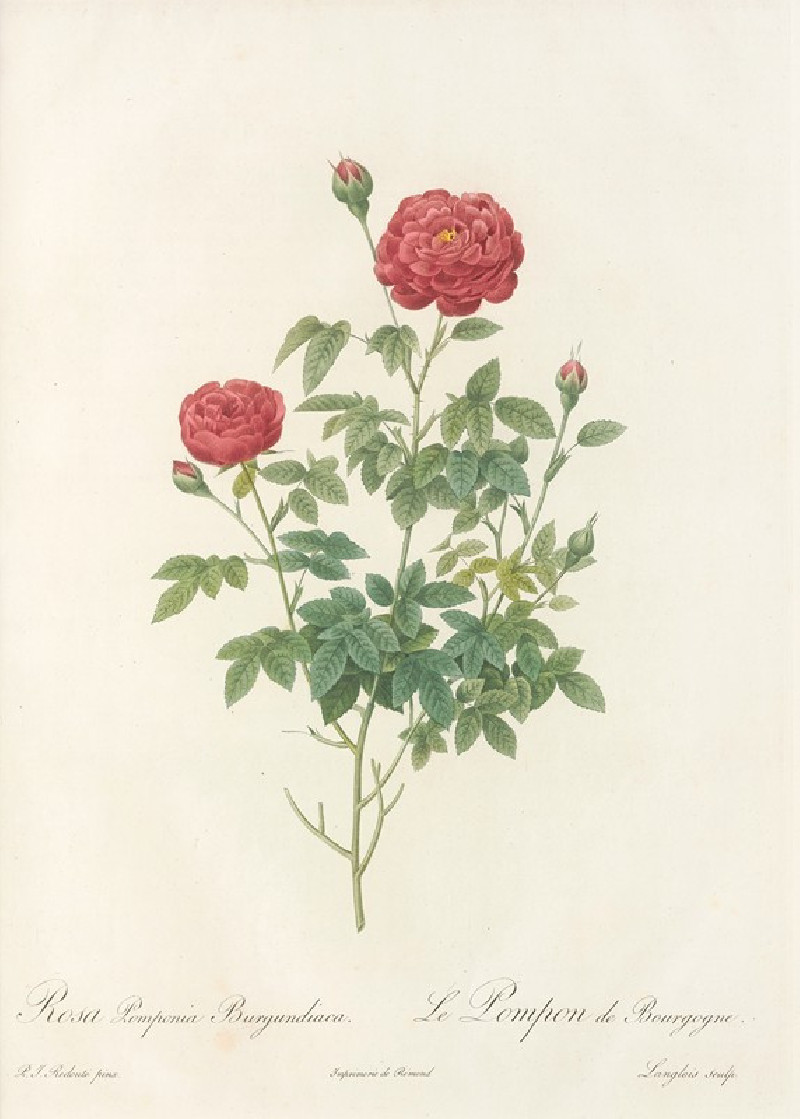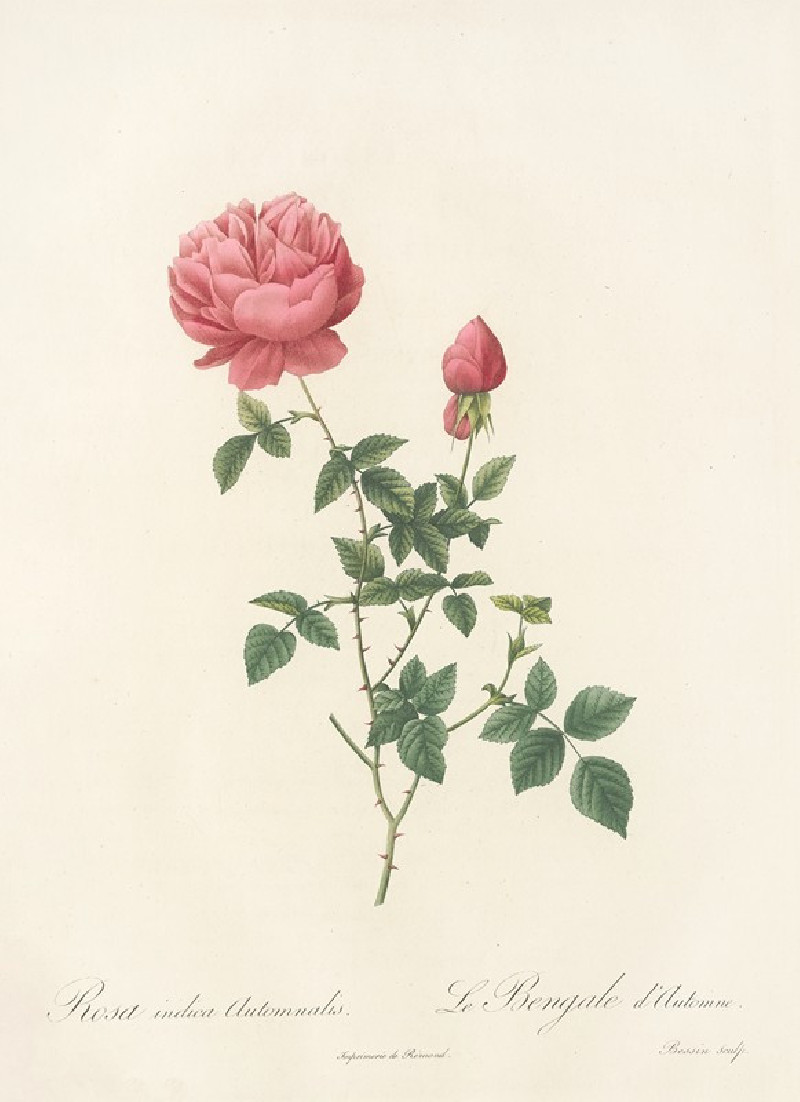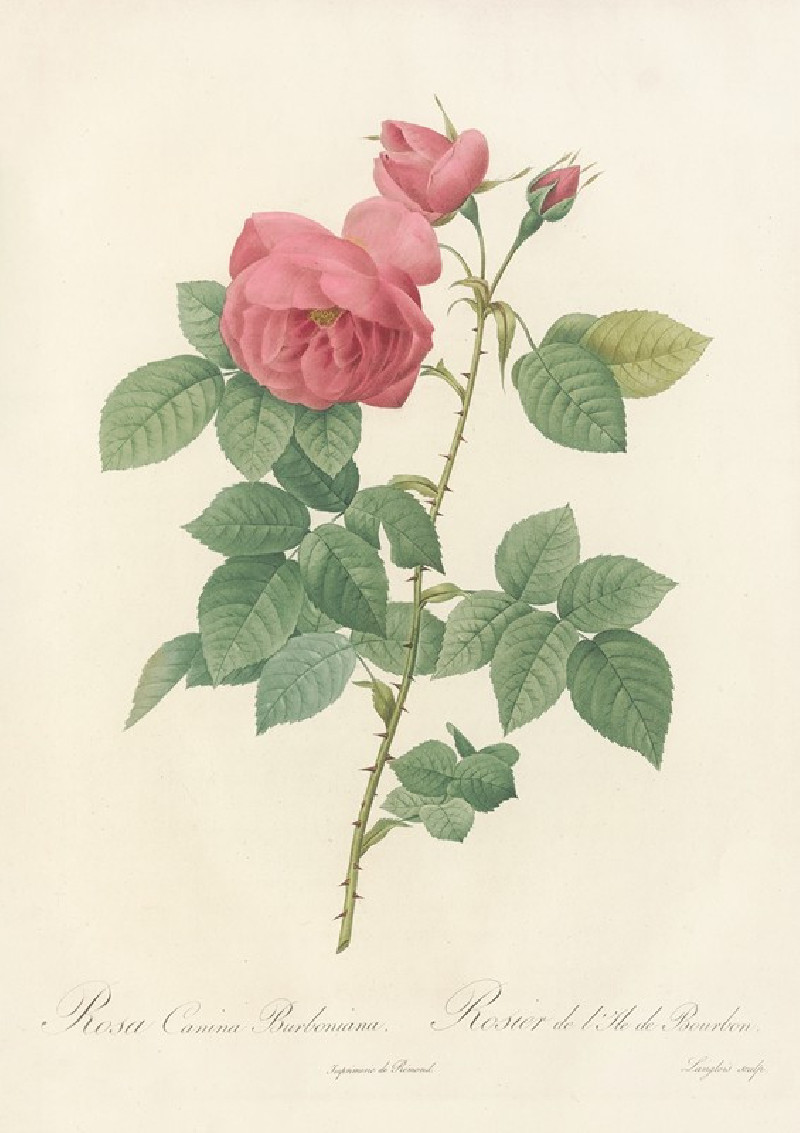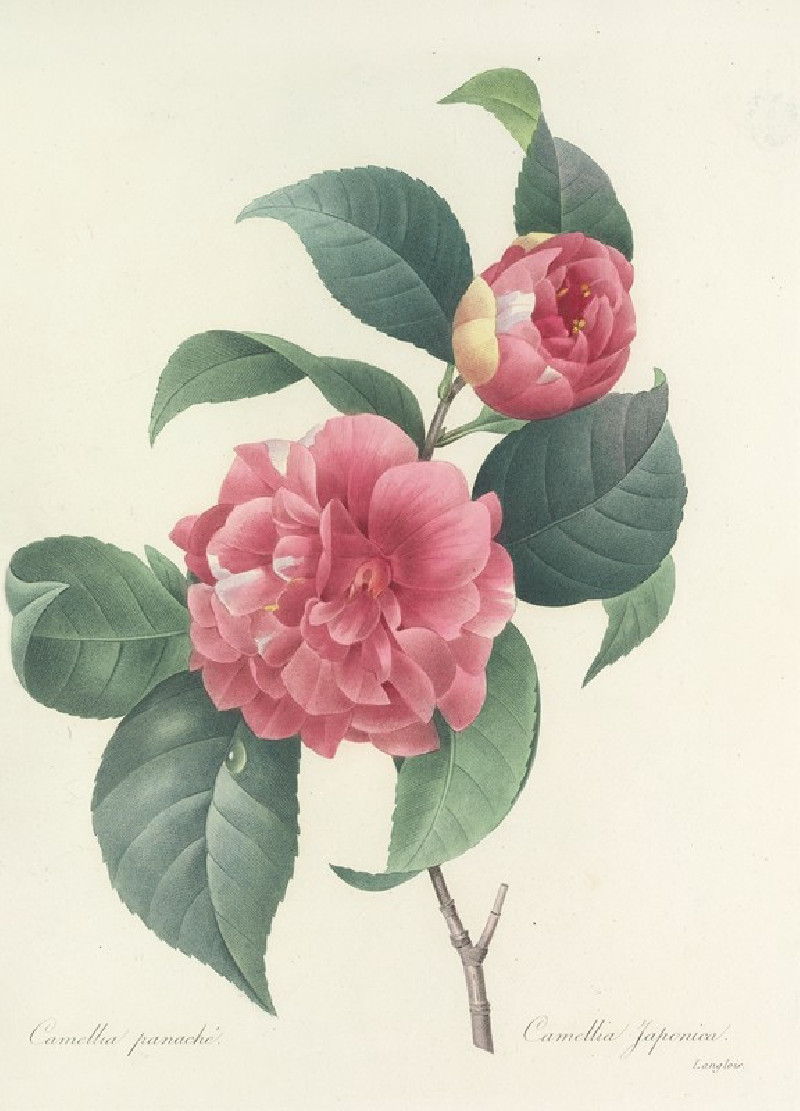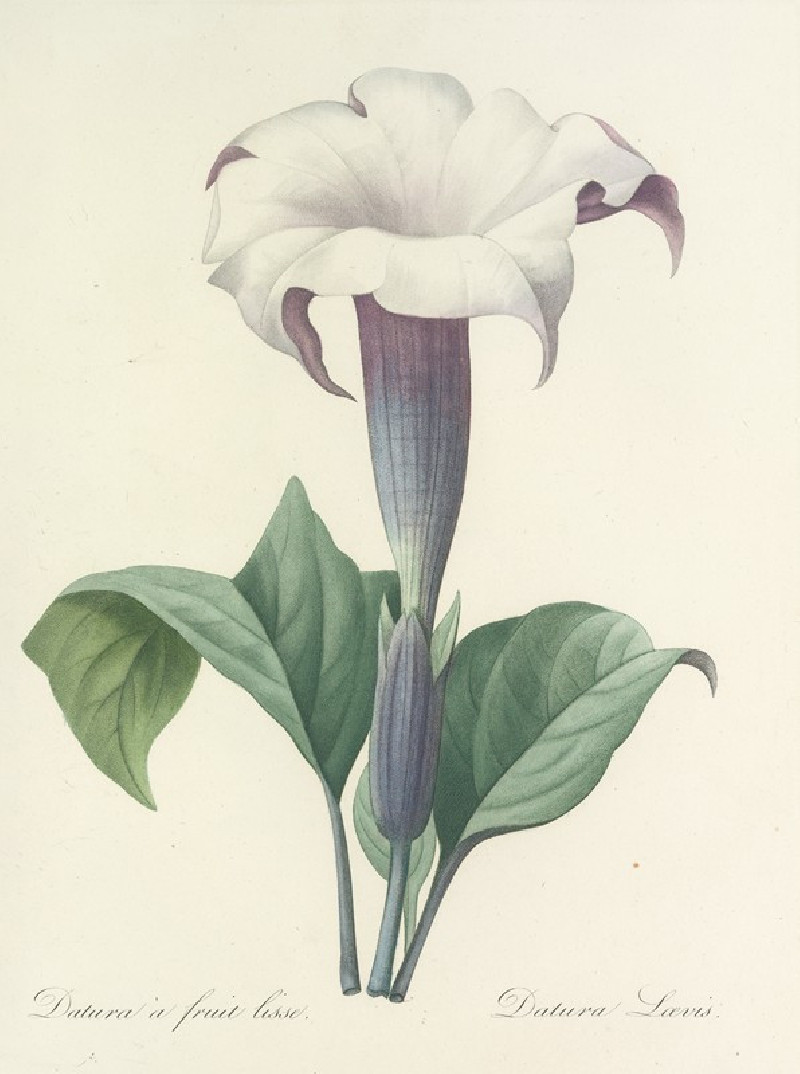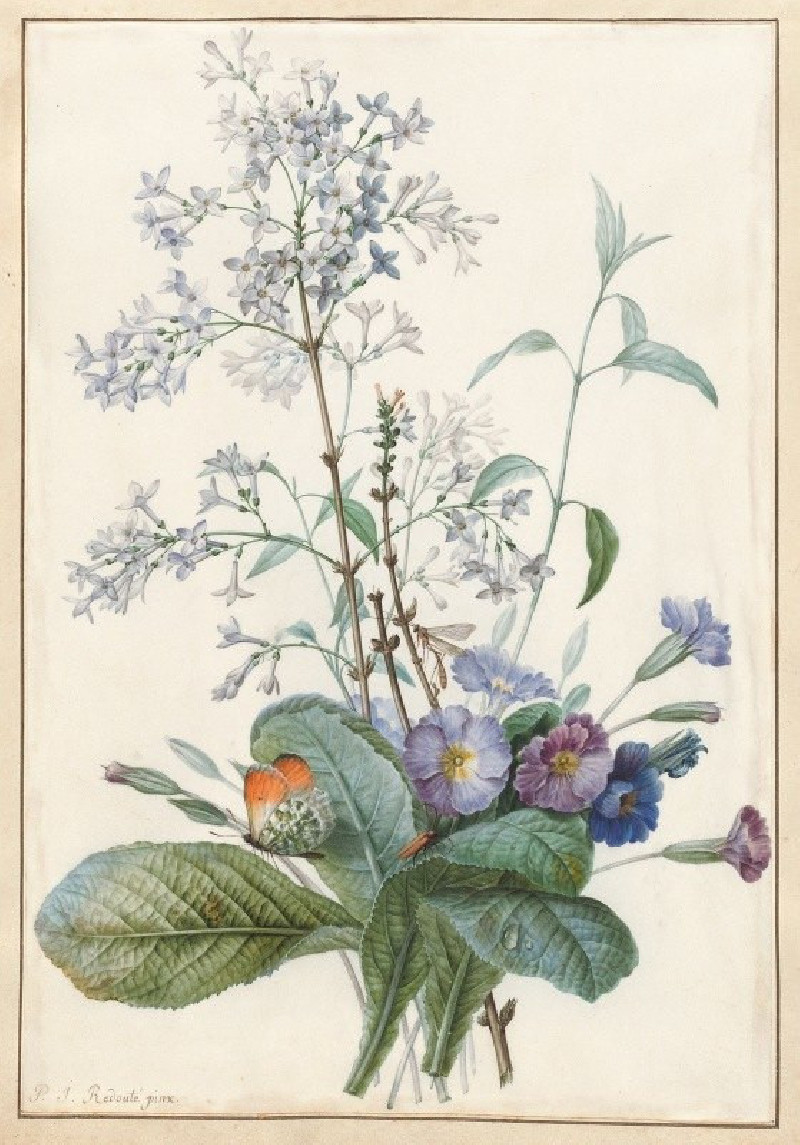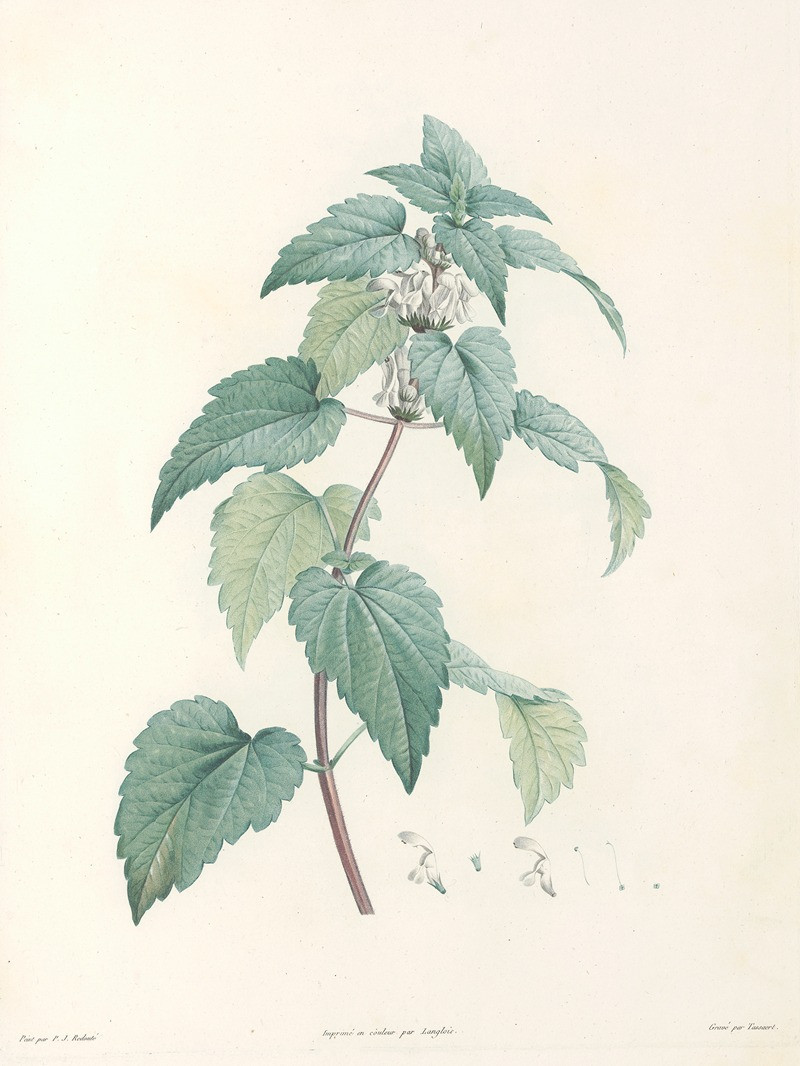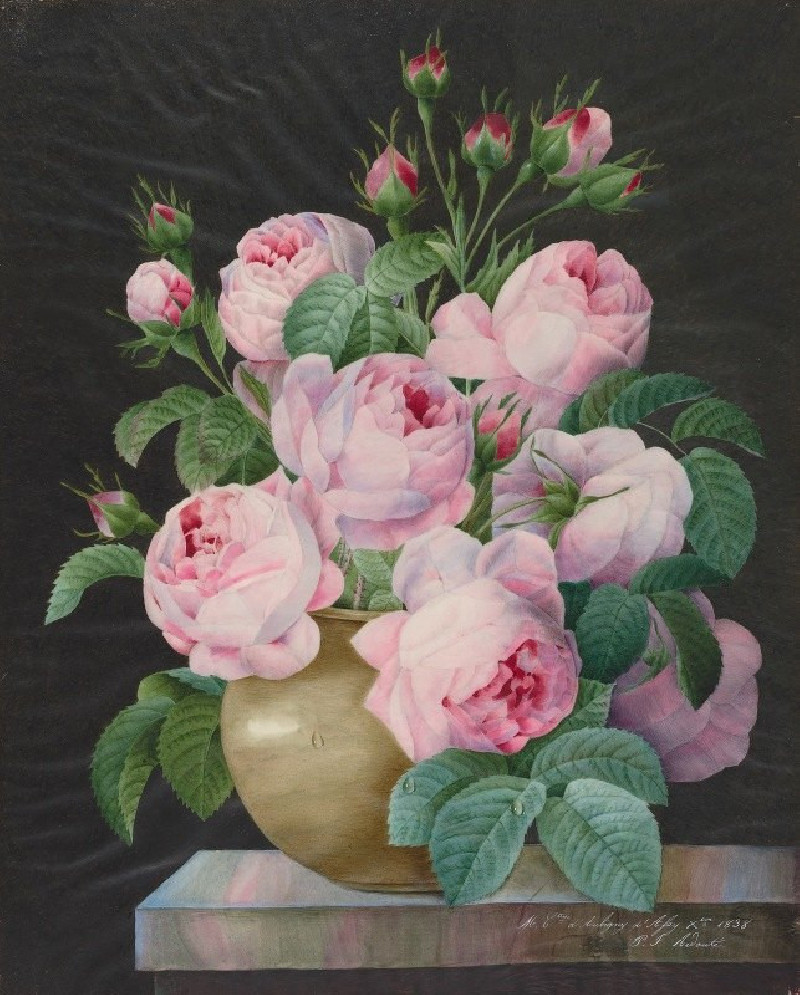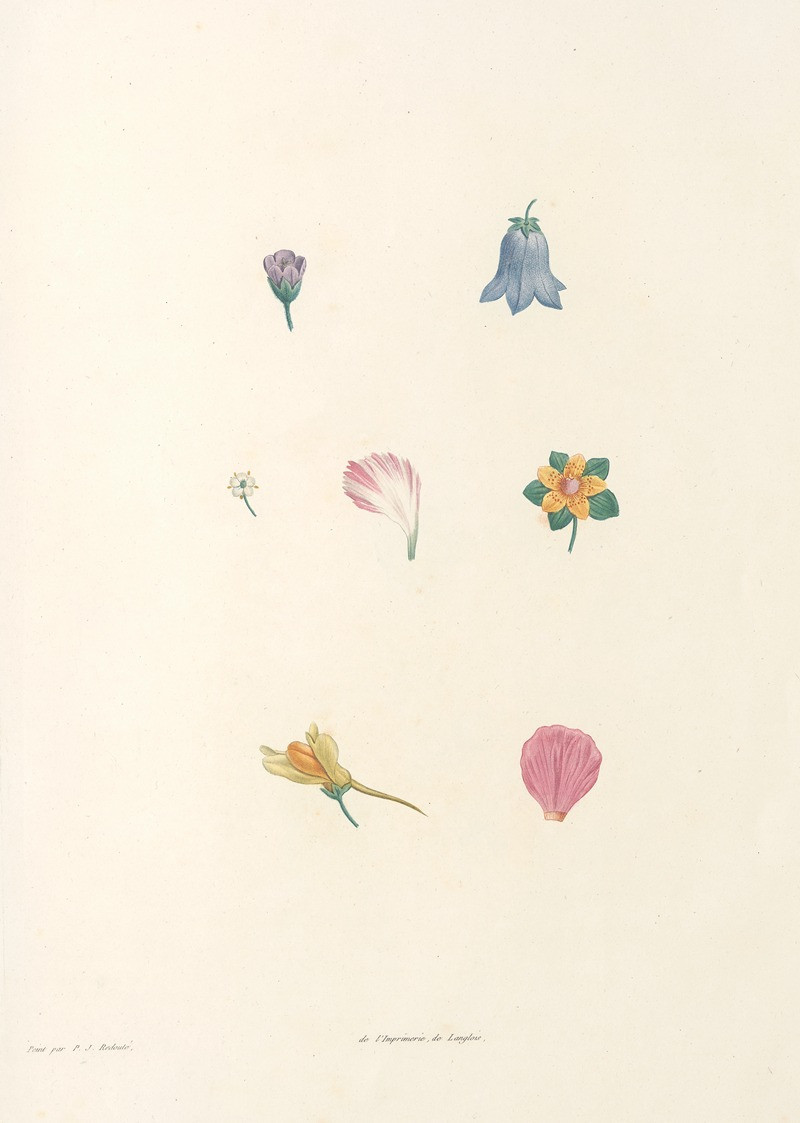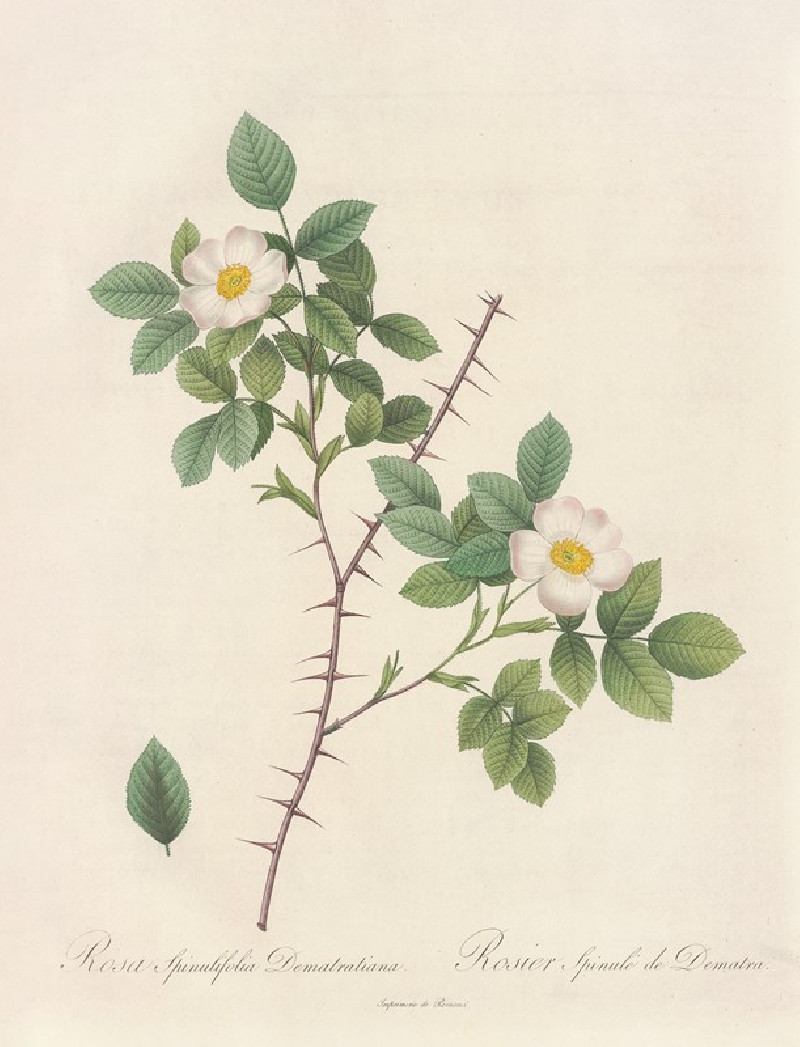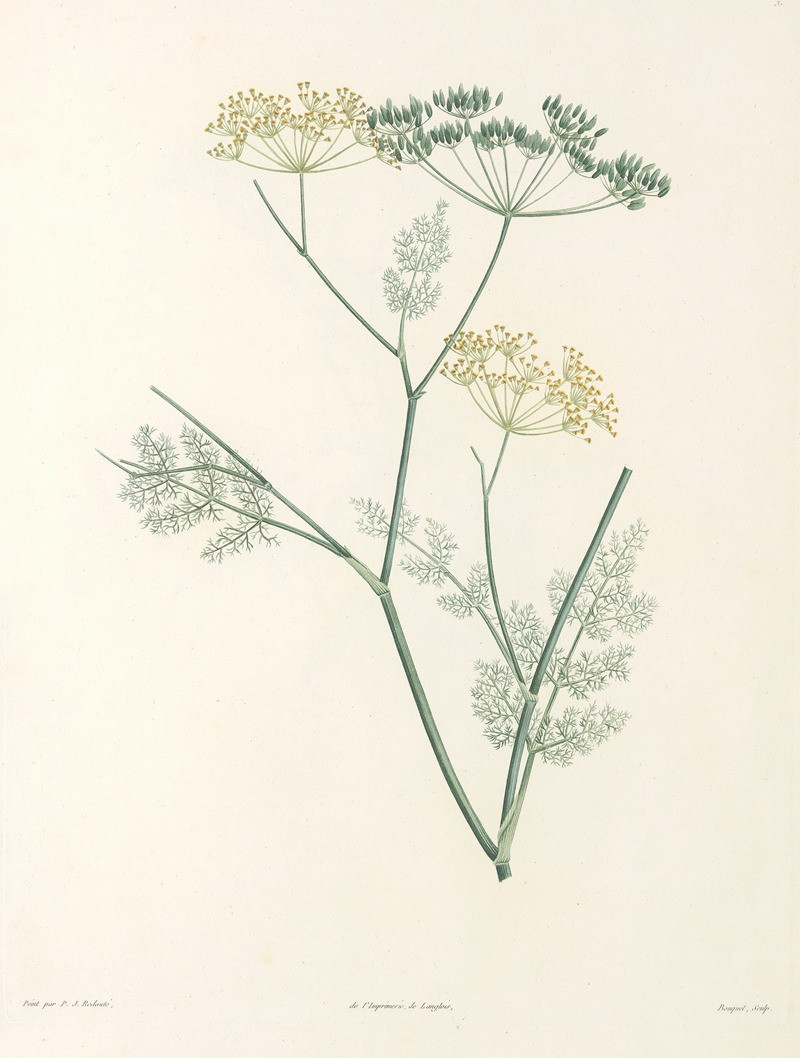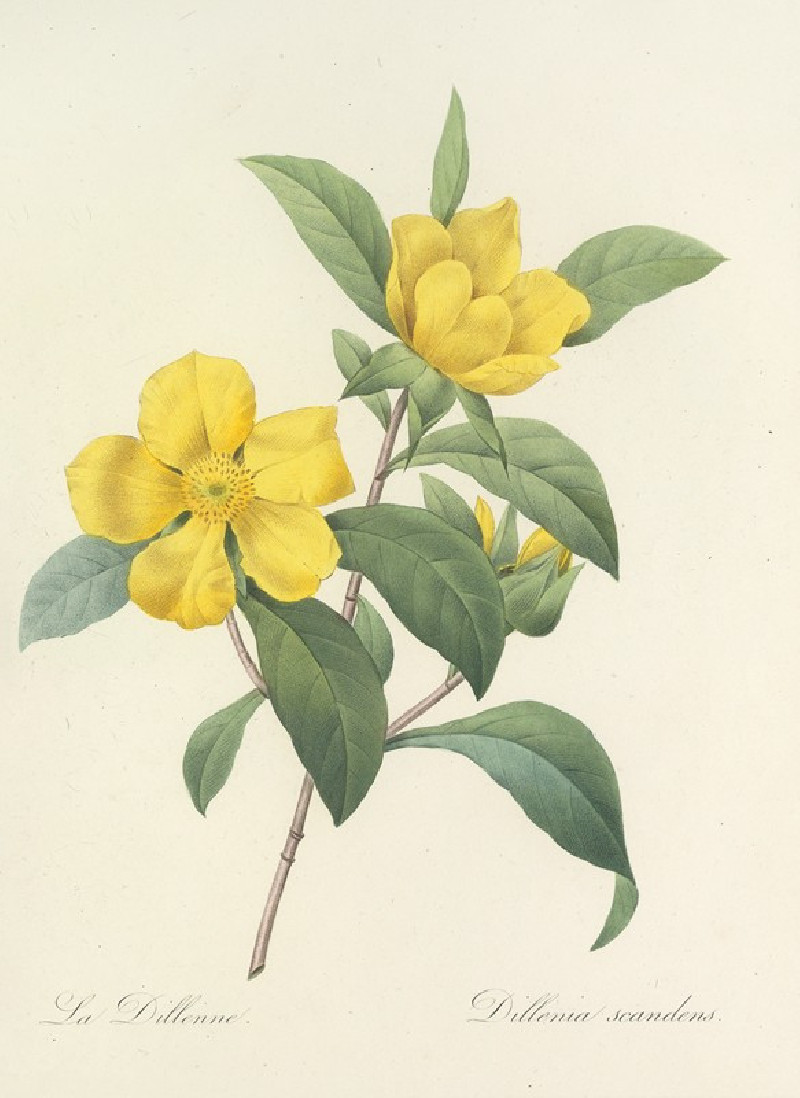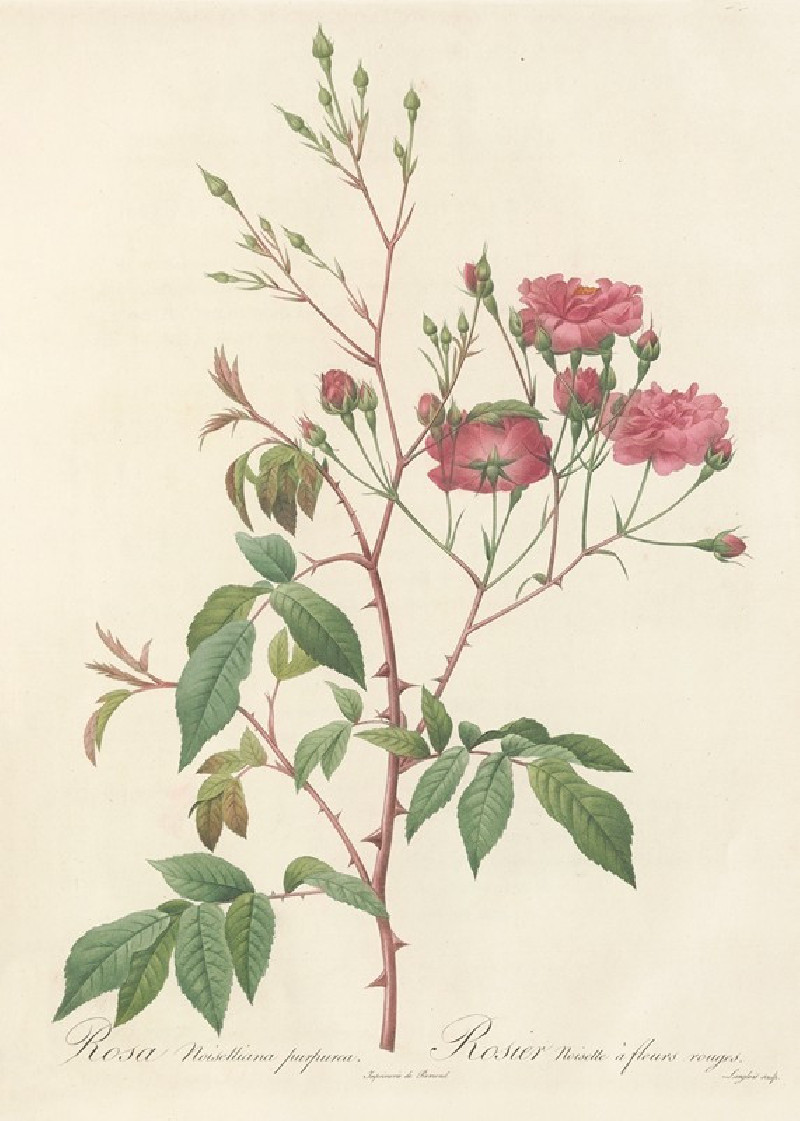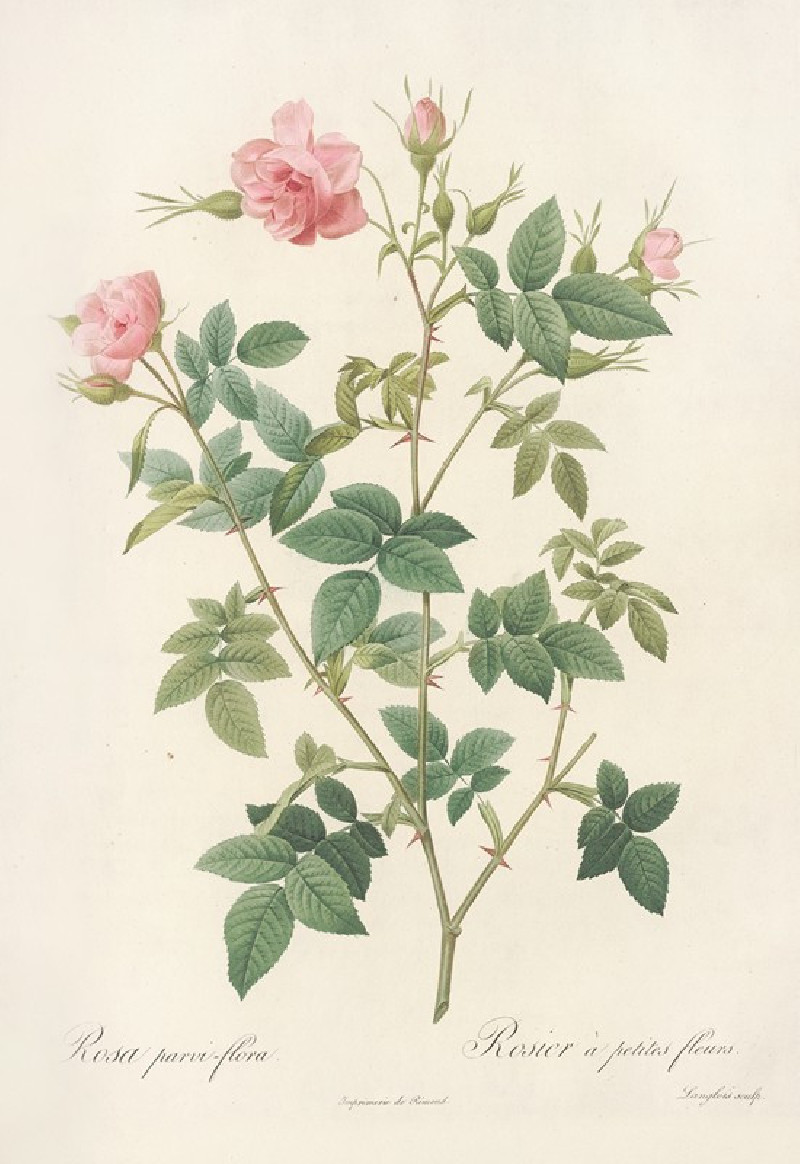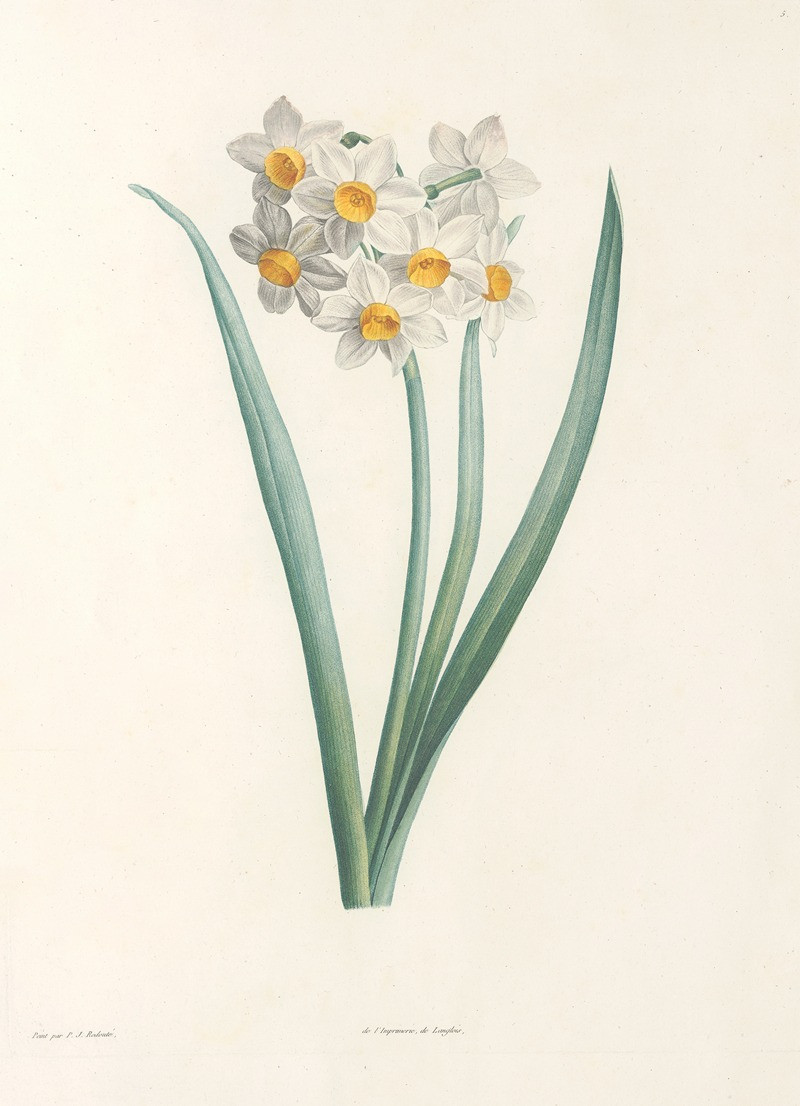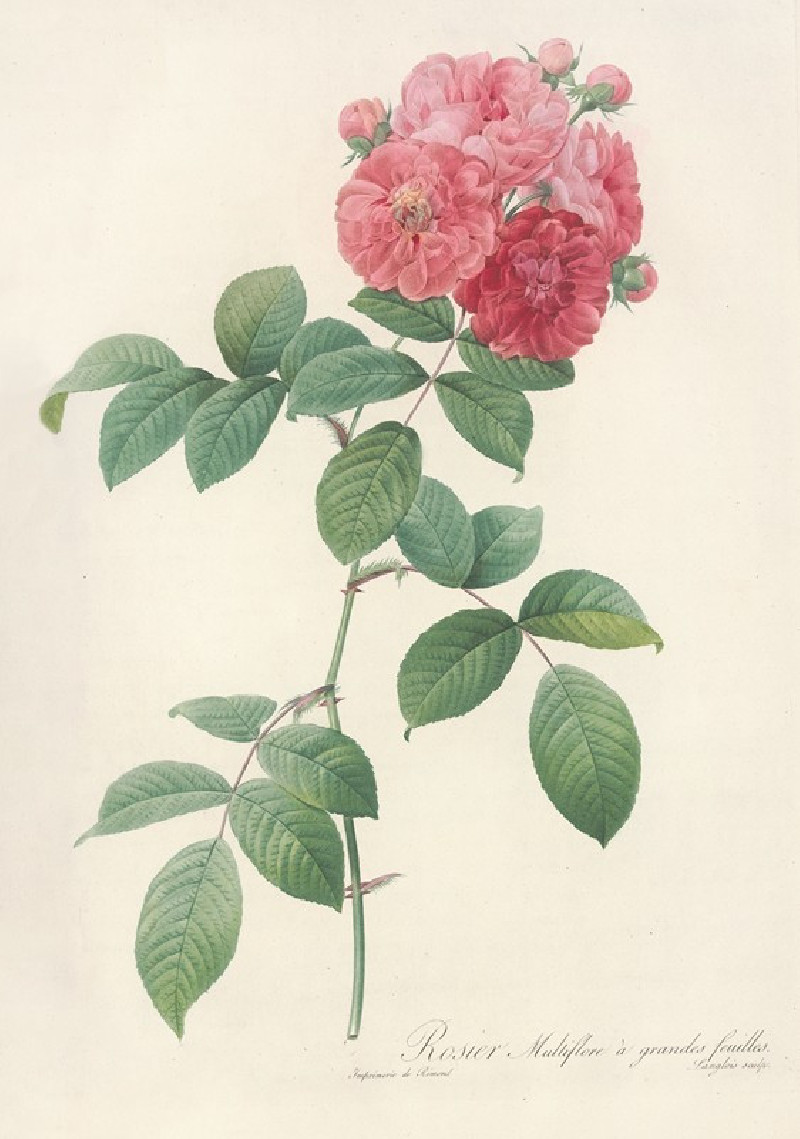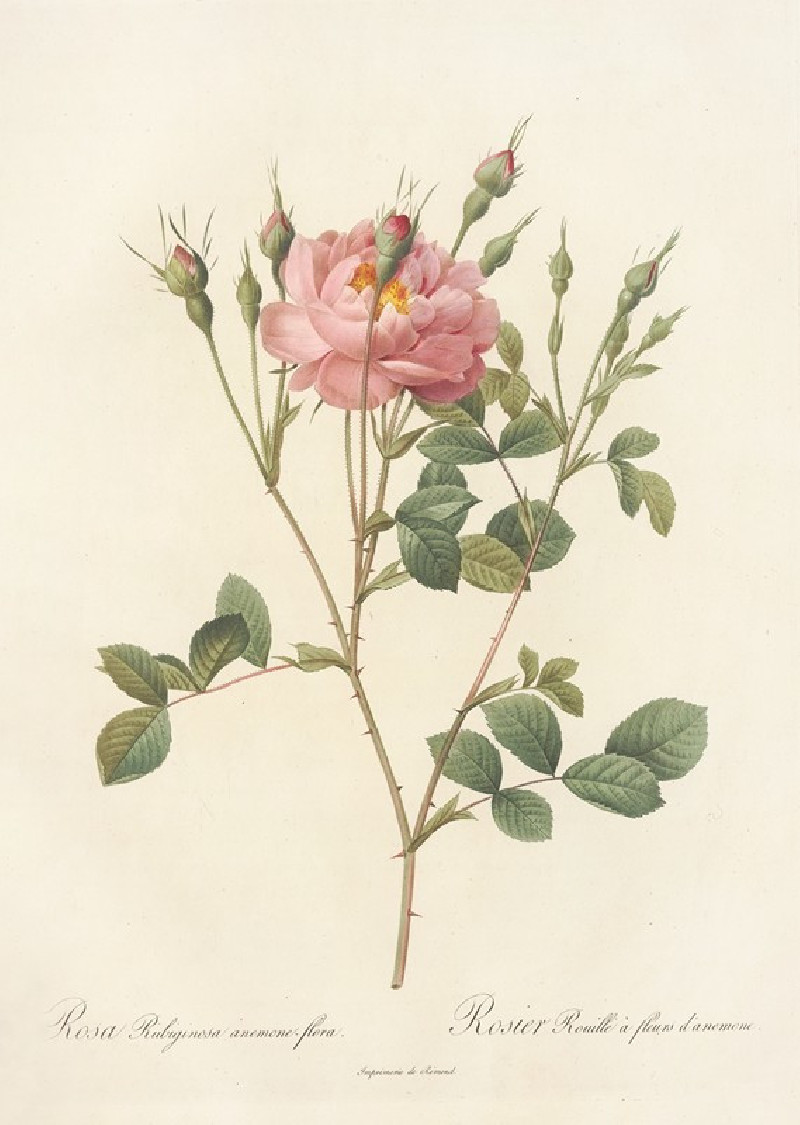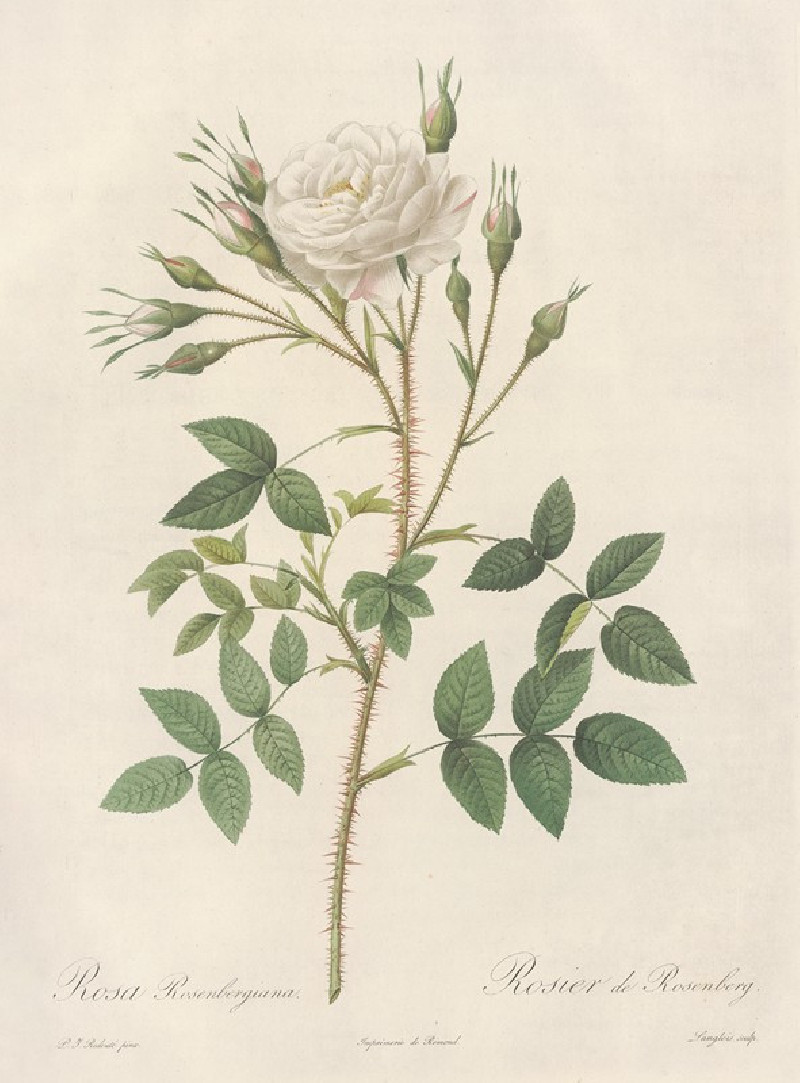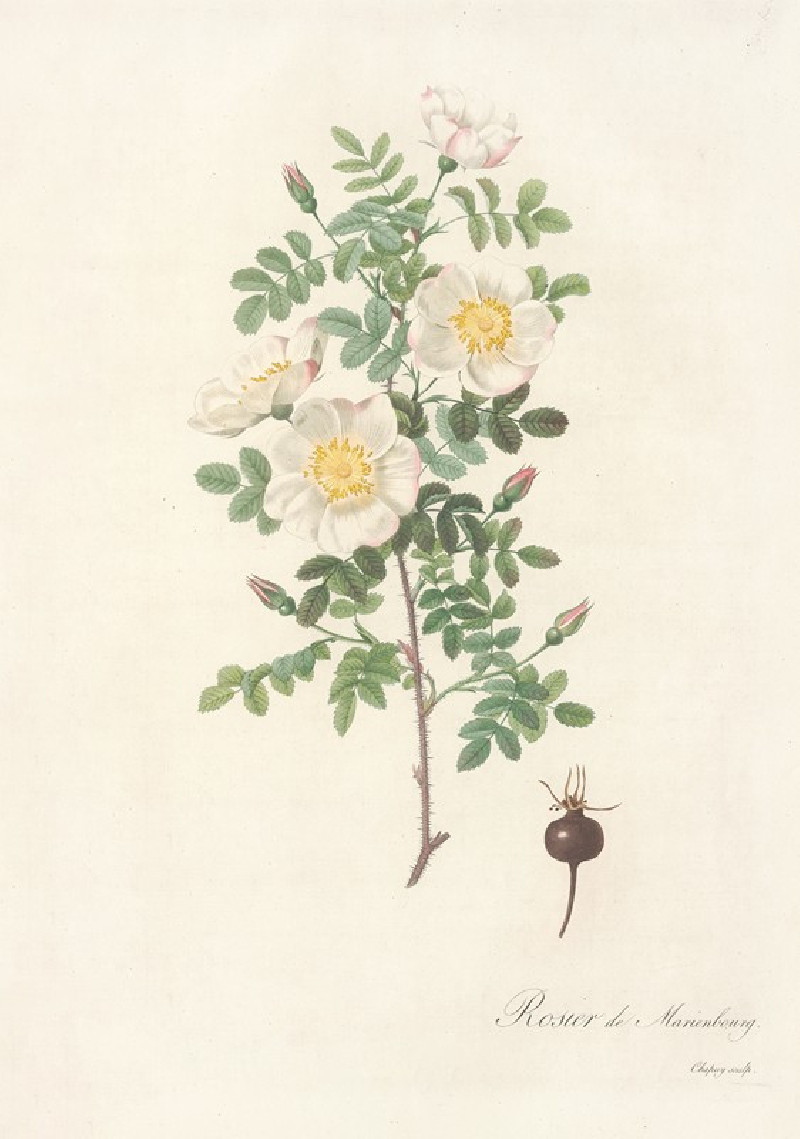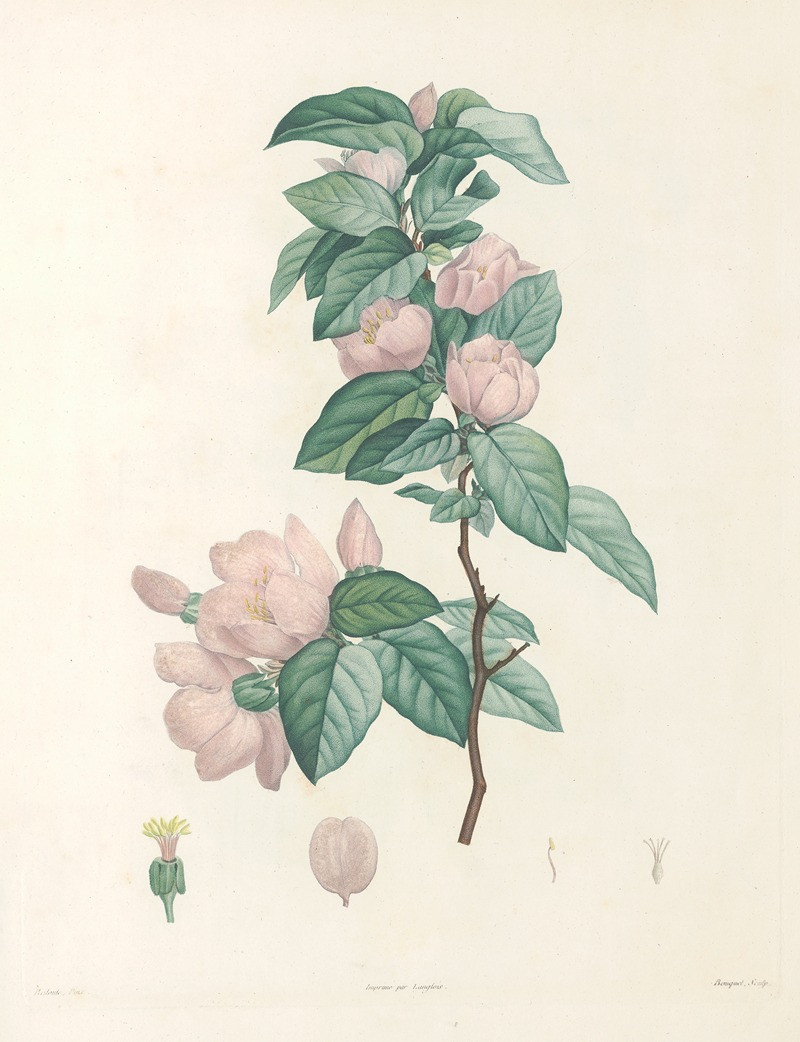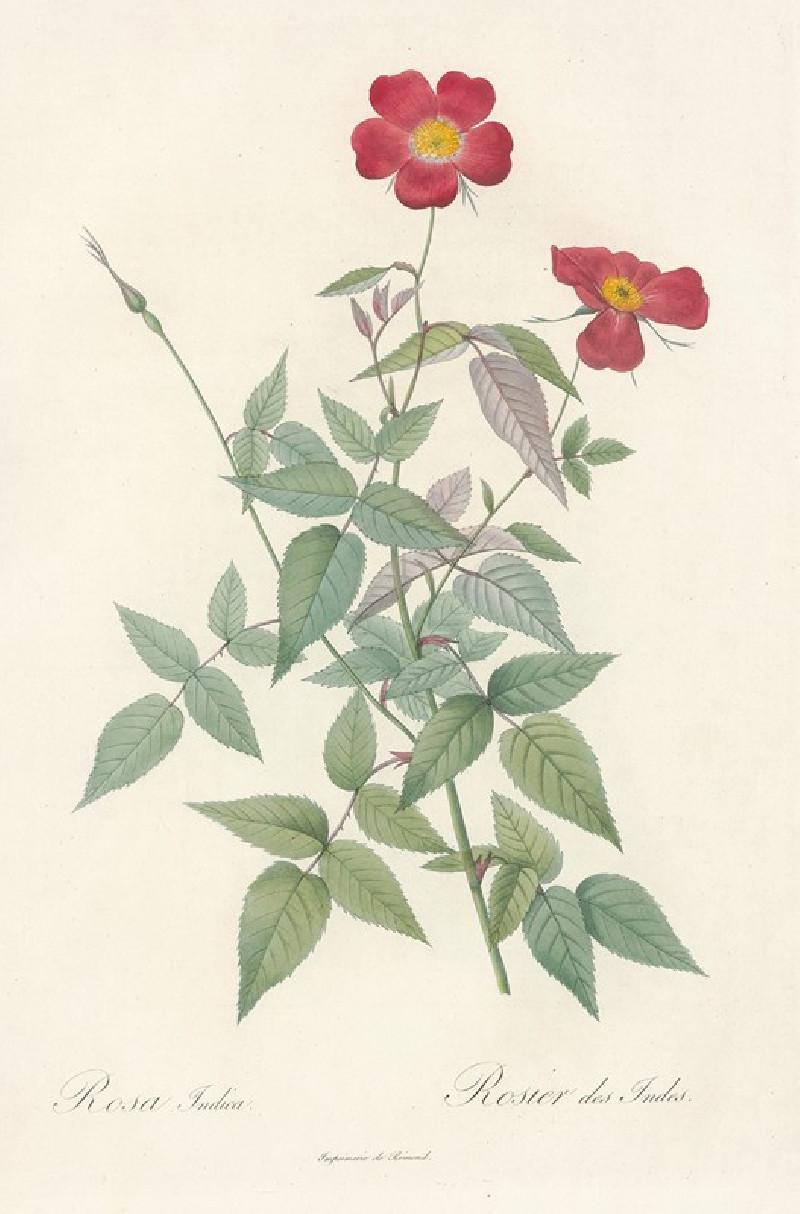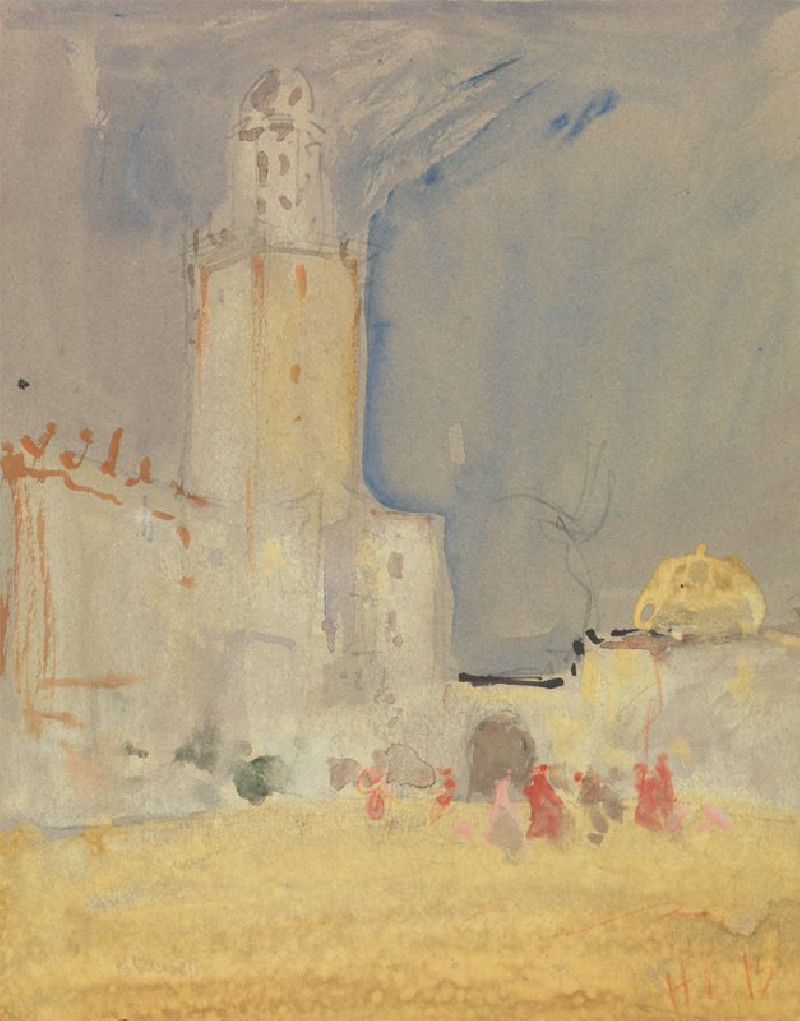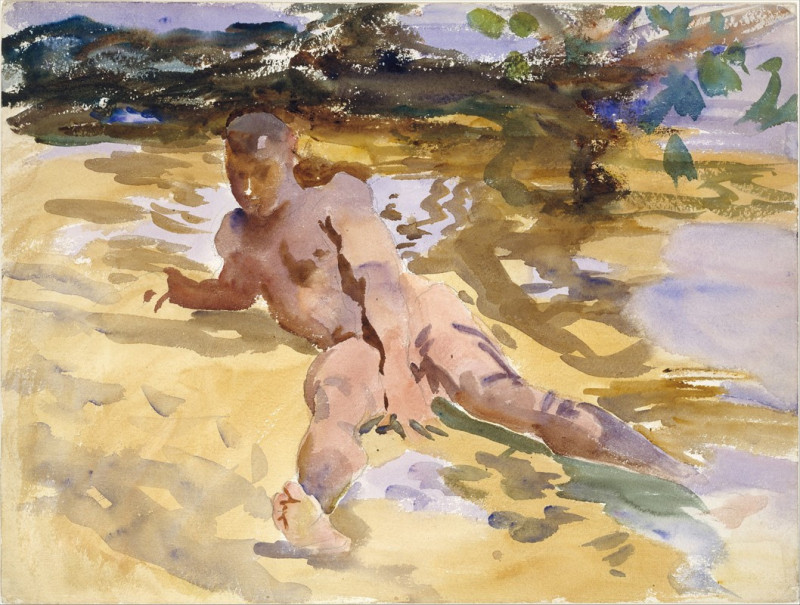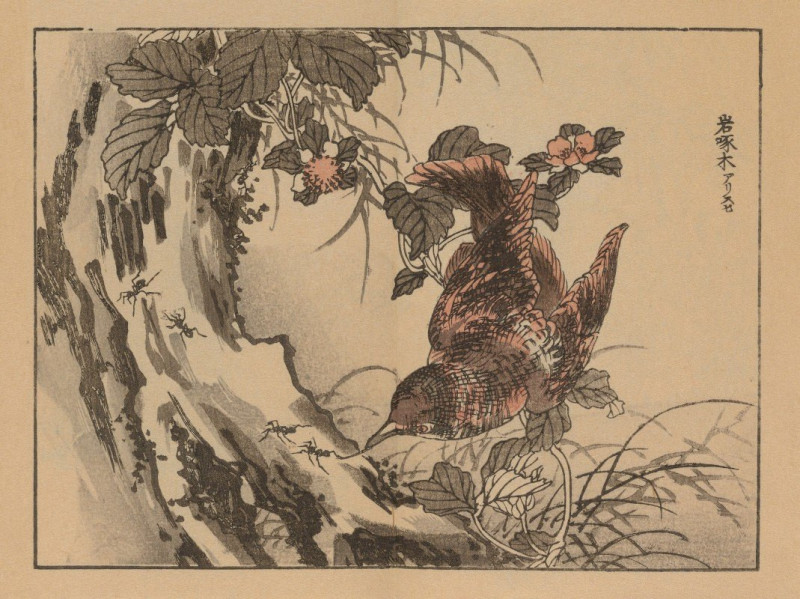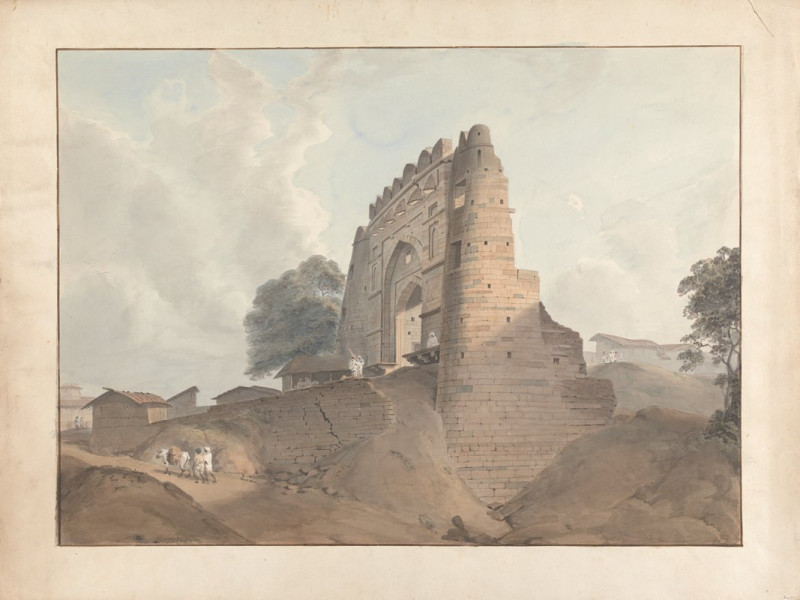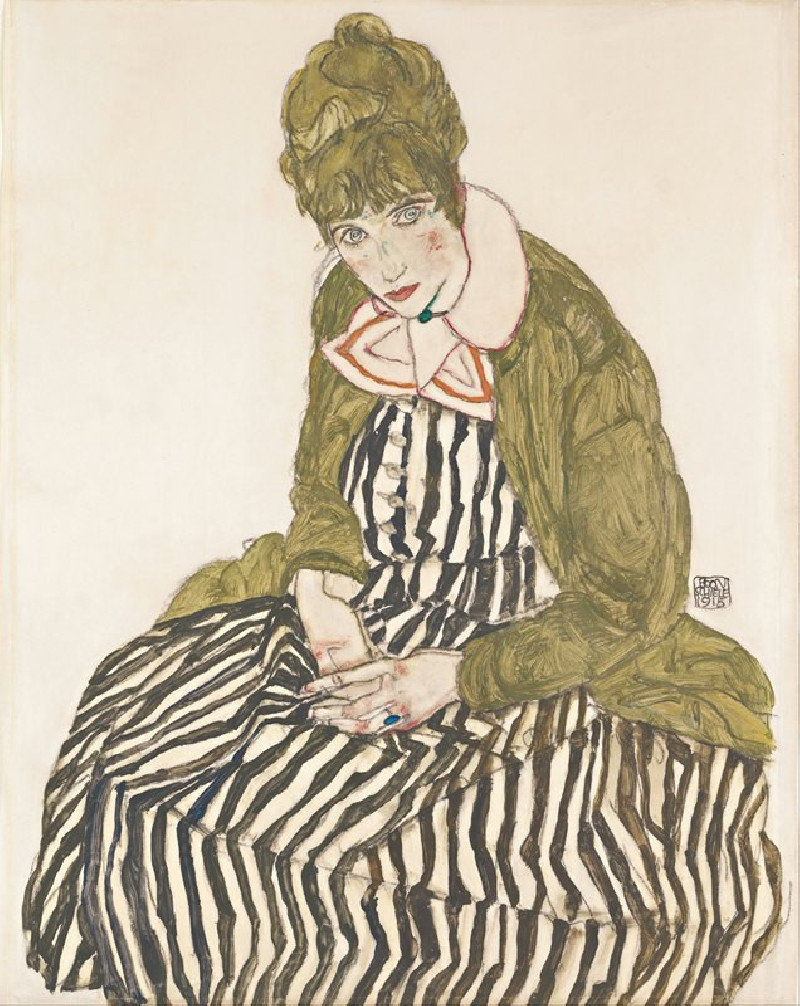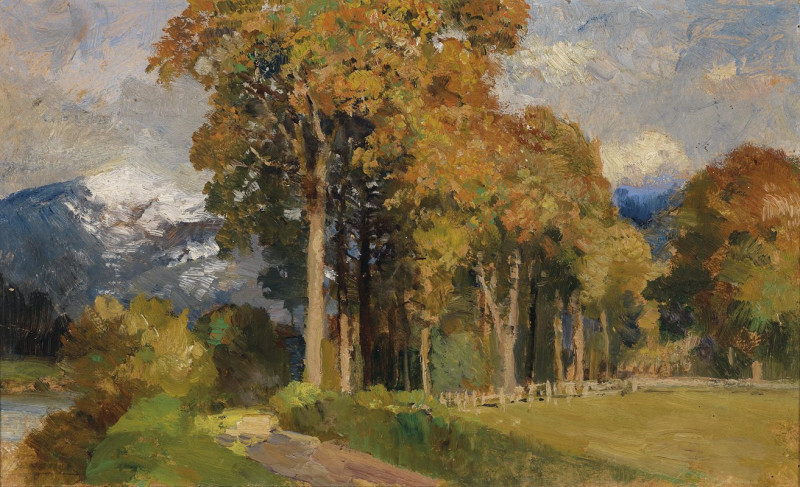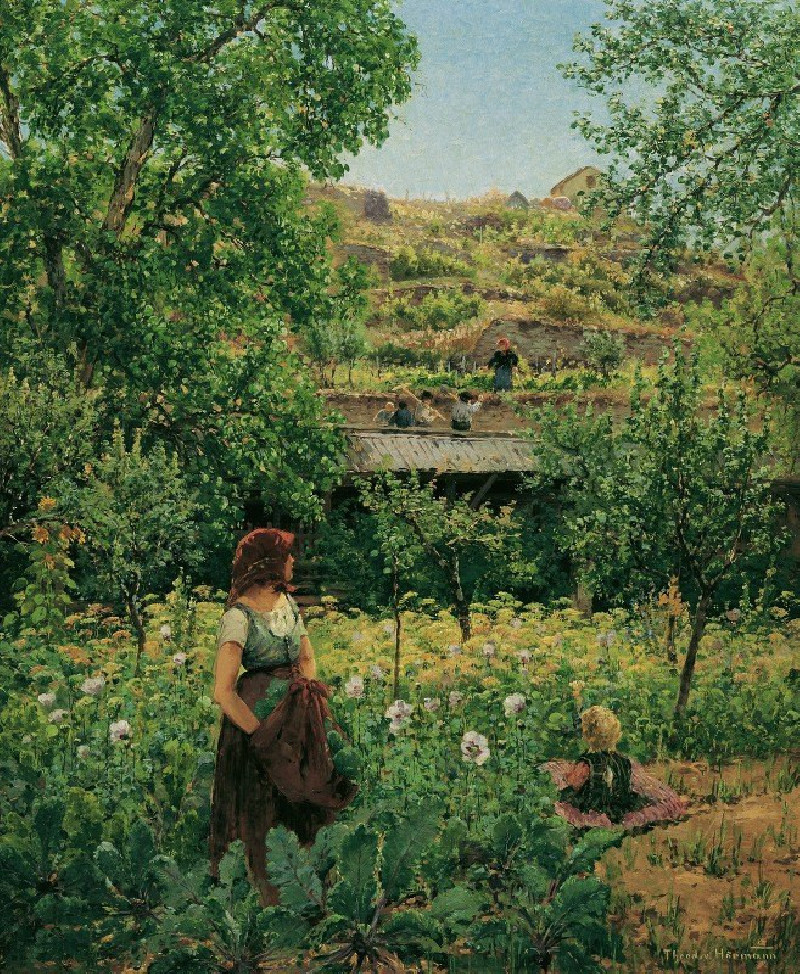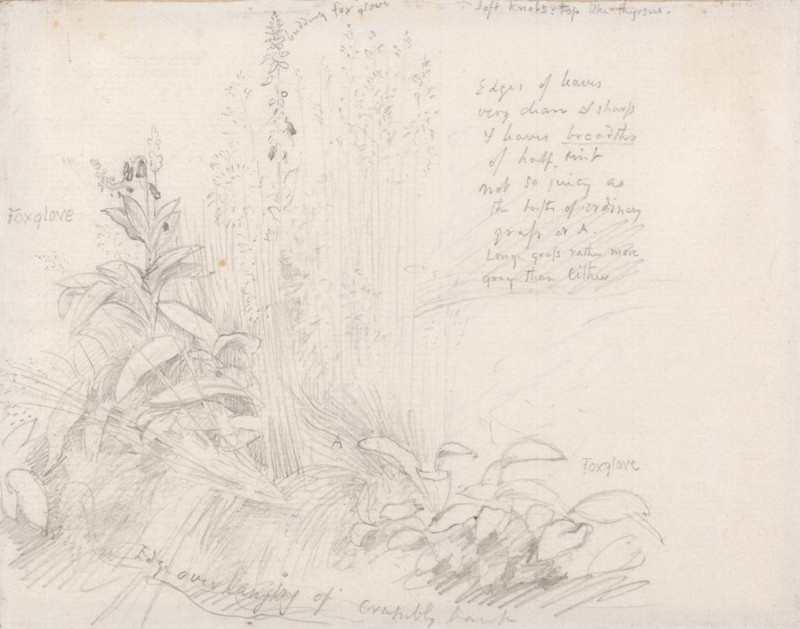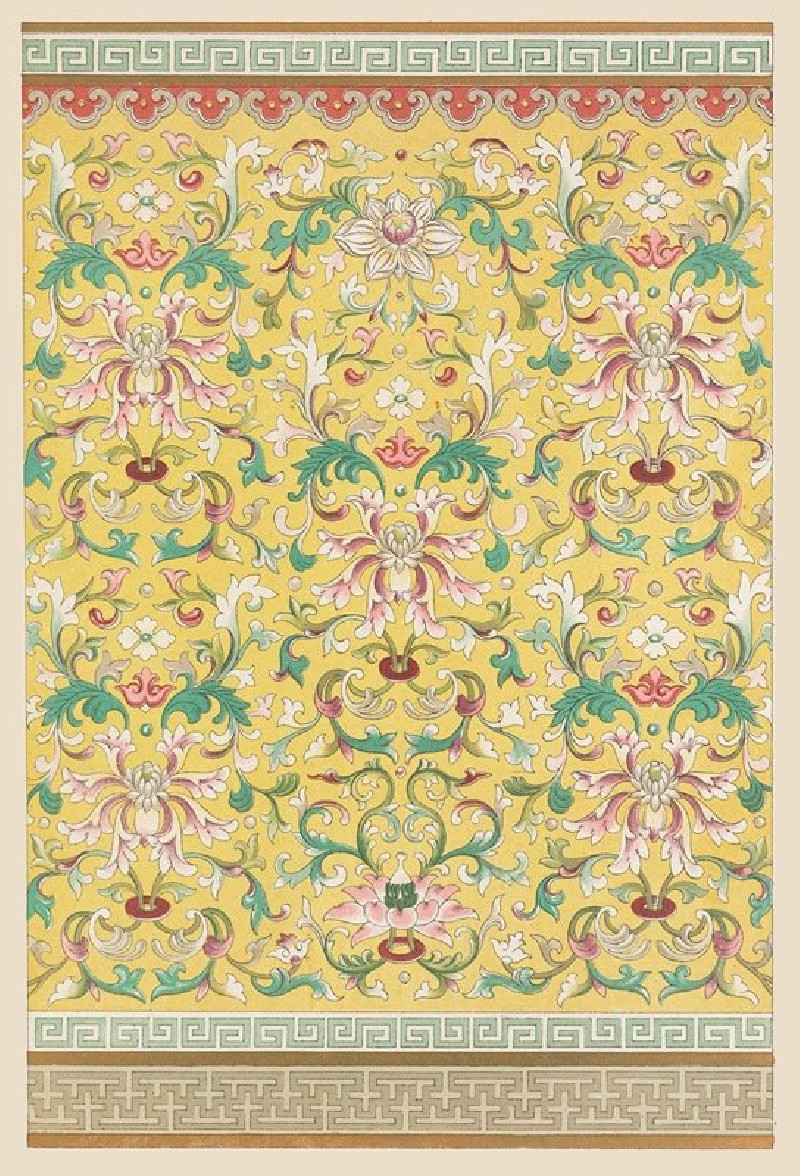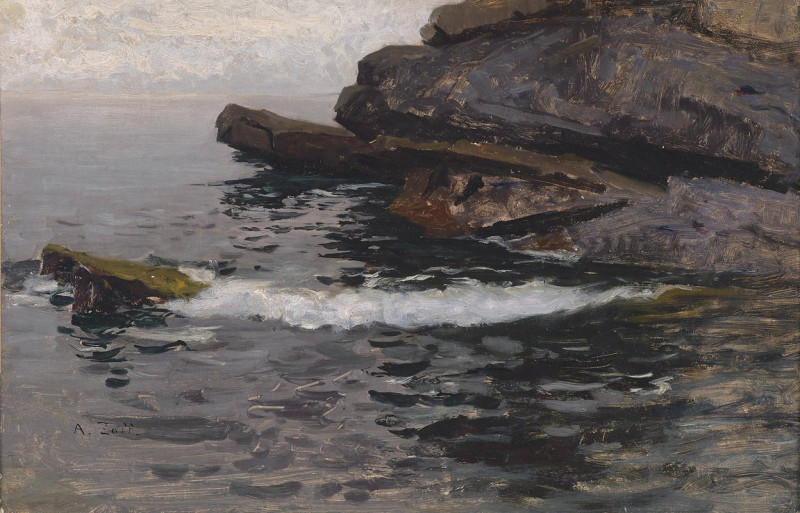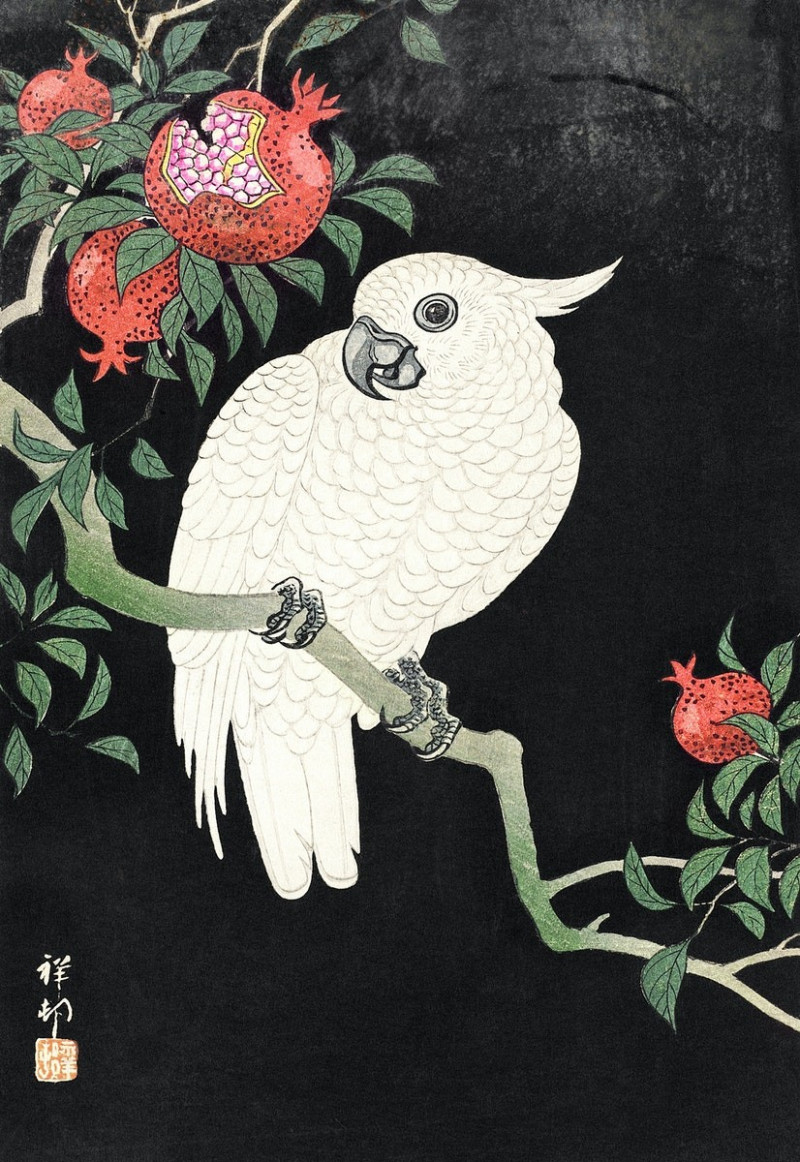Rosa Pomponia Burgundiaca (1817 - 1824)
Technique: Giclée quality print
Recommended by our customers
More about this artwork
Artist: Pierre Joseph Redouté Creation Date: 1817 - 1824Pierre Joseph Redouté's "Rosa Pomponia Burgundiaca" is a stunning example of botanical illustration that combines scientific accuracy with artistic splendor. Created between the years 1817 and 1824, this painting is part of a larger series by Redouté, who is renowned for his detailed depictions of flowers, particularly roses.The artwork presents a rose branch with a full bloom and a semi-open bloom, along with several buds poised to unfold. The flowers, rendered in varying shades of deep pink and crimson, exhibit a lush, velvety texture that is almost palpable. Each petal is carefully shaded to capture the natural gradient of color found in the live blossoms, emphasizing the delicate interplay of light and shadow.Surrounding the roses are numerous green leaves, detailed with veins and serrated edges, portraying the rugged yet elegant nature of the rose bush. The choice of a plain, almost translucent background ensures that the viewer's focus remains solely on the vibrancy and detailed craftsmanship of the plant.Redouté's mastery in botanical art not only serves the purposes of decoration and delight but also provides a valuable scientific record. His works were highly esteemed among botanists for their contribution to the study of flora during his time and remain celebrated today for their beauty and precision. "Rosa Pomponia Burgundiaca" is a testament to Redouté’s enduring legacy as the "Raphael of flowers," bridging the gap between art and science in a way that few other artists have managed.
Delivery
Returns
Pierre-Joseph Redouté, was a painter and botanist from Belgium, known for his watercolours of roses, lilies and other flowers at Malmaison, many of which were published as large, color stipple engravings. He was nicknamed "the Raphael of flowers" and has been called the greatest botanical illustrator of all time.

